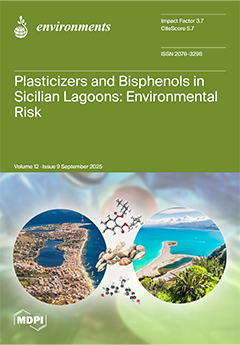Space weather exerts a significant influence on the Earth’s atmosphere, driving a variety of physical processes, including the production of cosmogenic radionuclides. Among these,
7Be is a naturally occurring radionuclide formed through spallation reactions induced by cosmic-ray showers interacting with atmospheric constituents,
[...] Read more.
Space weather exerts a significant influence on the Earth’s atmosphere, driving a variety of physical processes, including the production of cosmogenic radionuclides. Among these,
7Be is a naturally occurring radionuclide formed through spallation reactions induced by cosmic-ray showers interacting with atmospheric constituents, primarily oxygen and nitrogen. Over long timescales, the atmospheric concentration of
7Be exhibits a direct correlation with the cosmic-ray flux reaching the Earth and an inverse correlation with solar activity, which modulates this flux via variations of the heliosphere. The large availability of
7Be concentration data, resulting from its use as a natural tracer employed in atmospheric transport studies and in monitoring the fallout from radiological incidents such as the Chernobyl disaster, can also be exploited to investigate the impact of space weather conditions on the terrestrial atmosphere and related geophysical processes. The present study analyzes a long-term dataset of monthly
7Be activity concentrations in air samples collected at ground level since 1987 at the ENEA Casaccia Research Center in Rome, Italy. In particular, the linear correlation of this time series with the galactic cosmic ray flux on Earth and solar activity have been investigated. Data from a ground-based neutron monitor and sunspot numbers have been used as proxies for galactic cosmic rays and solar activity, respectively. A centered running-mean low-pass filter was applied to the monthly
7Be time series to extract its low-frequency component associated with cosmic drivers, which is partially hidden by high-frequency modulations induced by atmospheric dynamics. For Solar Cycles 22, 23, 24, and partially 25, the analysis shows that a substantial portion of the relationship between stratospheric
7Be concentrations and cosmic drivers is captured by linear correlation. Within a statistically consistent framework, the evidence supports a correlation between
7Be and cosmic drivers consistent with solar-cycle variability. The
7Be radionuclide can therefore be regarded as a reliable atmospheric tracer of cosmic-ray variability and, indirectly, of solar modulation.
Full article





